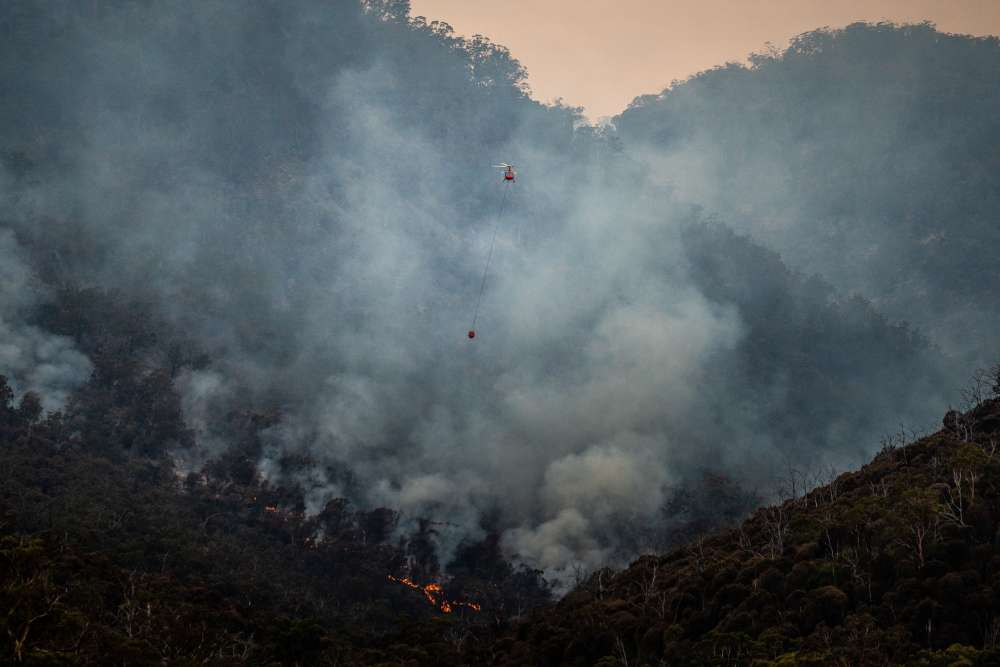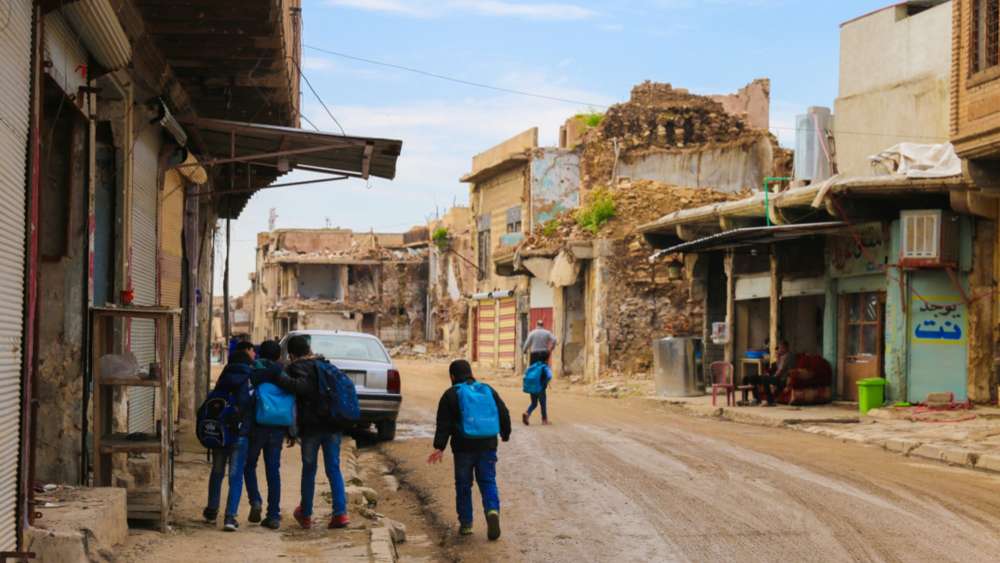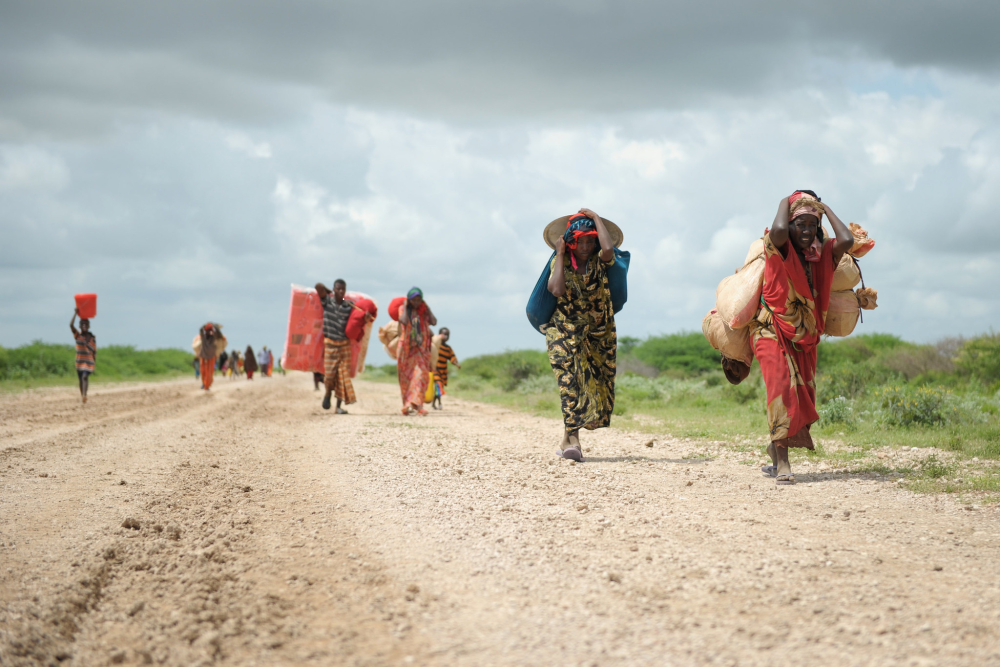Context Is Key: Why Moderation Is Needed at the Climate-Conflict Nexus
When it comes to preventing conflicts, climate adaptation cannot replace peacebuilding and inclusive governance. Why nuance is the name of the game when discussing climate change as a security risk.
The question of whether the climate crisis might lead to more violent conflict has been subject to more than a decade’s worth of systematic research. What have we learned over the last 10 years? Going forward, which lessons learned should inform policy-making regarding climate change and security? I would highlight three important insights that jointly call for moderation when discussing climate change as a security risk:
1. Extreme Climatic Conditions Can Destabilize Social Relations.
First, there is broad scientific agreement that extreme climatic conditions and events, such as severe droughts and floods, have the potential to destabilize social relations within or between communities. Whether and how this potential actually results in violent conflict, however, is less obvious.
In general, there is more scientific evidence that links adverse climatic events with low-level violence – such as local communal clashes or individual willingness to use violence – than with dominant security threats such as conventional conflicts and wars. Similarly, existing research offers greater indication that climate and weather patterns can shape how ongoing conflicts evolve (duration, severity), rather than actually contribute to the initial outbreak of violence. It should be mentioned that extreme climatic events are also associated with an increase in cooperative behavior. What this means in practice: cooperation, not conflict, is the common response to environmental hardship.
2. Context Matters.
Second, the likelihood that climate events will generate violent conflict fundamentally depends on the prevailing societal context at the local and national level. At the end of the day, there is no simple and mechanistic association between climate and conflict. The overwhelming majority of extreme climate events (both rapid-onset disasters and gradual changes) are managed and overcome peacefully.
At the same time, the large majority of contemporary violent conflicts occur outside the context of climatic disasters. In the rare cases where violent conflict might be plausibly attributed in part to shifting environmental conditions, the climate-related impact always occurs indirectly, for example by undermining livelihoods, triggering food price shocks or altering the migratory patterns of competing land-user groups. Moreover, climate-related conflict only emerges in settings where more generic drivers of conflict and instability are widespread. Where other risk factors are absent, climate change does not lead to violent conflict.
3. The Climate Effect Is Small Compared to Political Drivers.
Third, the climate crisis’ effect on conflict is small when compared to the main drivers of violent conflict. The Intergovernmental Panel on Climate Change (IPCC) assesses that the global magnitude of violent conflict in the future will continue to depend primarily on non-climatic factors. This finding partly reflects the first insights, as climatic events are relevant only for a subset of contemporary conflicts. But it also sheds light on the fact that violent conflicts first and foremost concern core political issues, such as the (re)distribution of wealth and privileges, territorial control and land use, resource management, governance accountability, civil rights and liberties, minority protection, and more.
Climate Adaptation Cannot Replace Peacebuilding and Inclusive Governance.
So, how should these insights inform policy thinking on climate change and security? The answer: By encouraging moderation and nuance. Routinely highlighting the climate crisis’ contribution to conflict risks can shift focus away from the main culprits of violence. For example, statements by then-UN Secretary General Kofi Annan and other observers that the 2003 Darfur conflict and genocide arose “at least in part from climate change” were warmly endorsed by the Khartoum regime, rebel and militia leaders alike, and these claims even led the Guinness World Records to list the atrocities as the first climate change war. However, experts on the Darfur case offer a more sobering analysis.
Uncritically stressing climate-driven security risks may also lead leaders to divert resources away from traditional conflict prevention and peacebuilding efforts and toward well-intended – but potentially counterproductive – climate adaptation programs. Without adequately addressing the underlying political sources of grievances and misery, climate adaptation programs can reinforce existing inequities and marginalization and facilitate elite corruption. Likewise, while environmental peacebuilding has many appealing features, its empirical record to date is mixed. This also suggests that sensitivity to the political context is crucial when applying a ‘climate lens’ on programming toward security risk reduction.
Key Points:
- Where other political risk factors are absent, climate change in itself does not lead to violent conflict.
- In conflict situations, sensitivity to the political context is crucial when applying a ‘climate lens’ on programming toward security risk reduction.
- In its National Security Strategy, Germany should focus on ending violence and extremism – which is the most effective means of reducing populations’ vulnerability to climate change impacts.
This leads to a final insight that, unfortunately, is too often ignored in the contemporary climate security discourse: violent conflict also shapes the impacts of climate change. Violent conflict is development in reverse – it ruins economies and livelihoods, destroys public services and infrastructure, and kills, maims and displaces large numbers of people every year – sometimes with a lasting effect on society. Because of these devastating effects, violent conflict is a dominant driver of disaster vulnerability, a common denominator of today’s worst humanitarian crises and a major barrier to sustainable development. Thus, in conflict-affected corners of the world, ending violence and extremism would be the single most effective means of reducing populations’ vulnerability to climate change impacts.
Let me end by stating the obvious: It is absolutely crucial to mitigate climate change in order to minimize future climate impacts on nature and societies. The headline statements of the recent IPCC Sixth Assessment Report are instructive in that regard. Even though future peace and security may not depend on societies’ collective success in achieving climate-resilient development, climate-resilient development is impossible in the absence of peace. In that sense, conflict resolution and peacebuilding actions that support accountable and inclusive governance should constitute the first steps toward eradicating climate-driven security risks.
This article is based on an output from the POLIMPACT project, which is funded by the European Research Council (ERC), grant no. 101055133. However, the views and opinions expressed here are those of the author and do not necessarily reflect those of the European Union or the ERC. Neither the European Union nor the granting authority can be held responsible for the opinions expressed herein.
Halvard Buhaug
Research Professor, Peace Research Institute Oslo (PRIO)
Weiterlesen

How to Design a National Security Strategy with Peace in Mind
Germany’s security will be decided in the international arena and secured through transformative approaches to conflict resolution. To draft a successful and worthy strategy, Berlin will need to approach it with a global peace mindset.

In a Globalized World, No Security Without Climate Security
Because they are driven by narrow concepts of security, security strategies typically end up looking for answers to new threats in the same old places. But Germany still has a chance to do it differently.

Prioritizing the Protection of Civilians in National Security
When drafting security policy, those most affected by conflict are often missing from the equation. Applying a protection lens to Germany’s upcoming security strategy would be a way of putting civilians first.
